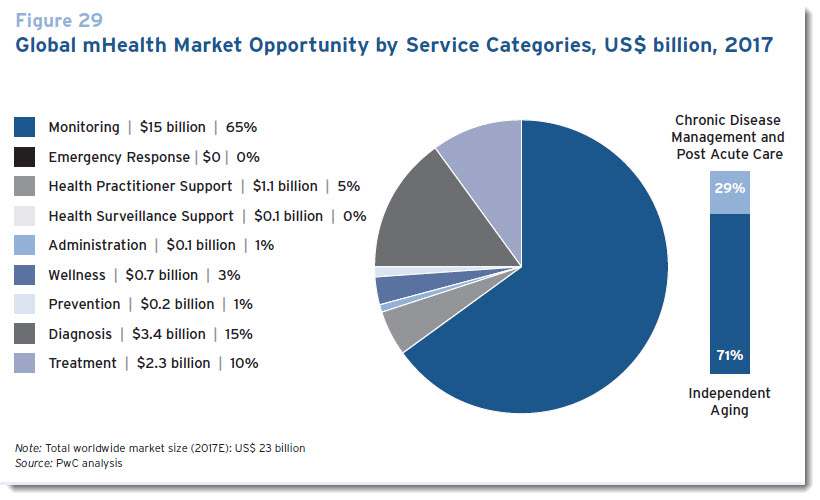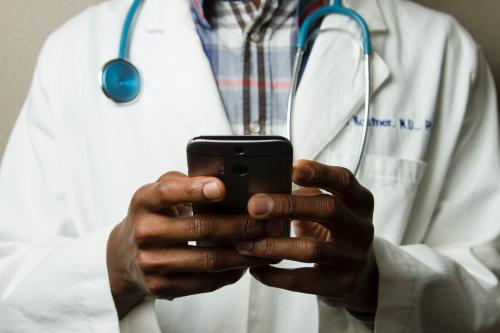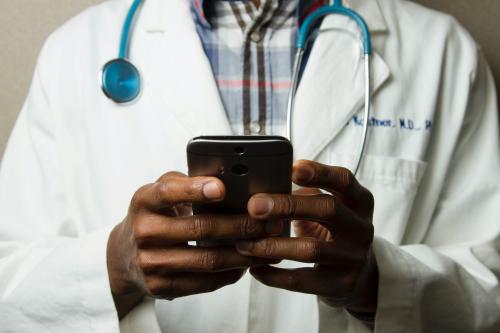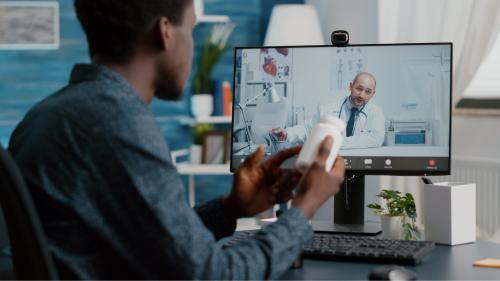On March 13, the Center for Technology Innovation (CTI) at Brookings hosted a panel of Chinese and American experts to address mobile health (mHealth) care challenges and solutions in both the Chinese and U.S. economies. Among the questions explored were: What challenges and opportunities does the field of mHealth create? How can China and the United States develop frameworks to empower mHealth providers to address important problems in health care? Panelists also discussed findings and data from new report, “mHealth in China and the United States: How Mobile Technology is Transforming Healthcare in the World’s Two Largest Economies.”
Darrell West, vice president and director of Governance Studies at Brookings and director of CTI, opened the event with some observations about mobile technology’s rise in the United States and its promise for mHealth:
Mobile health in the United States has really taken off in recent years. It’s been estimated that there are over 40,000 mobile health application that are available now. More than 247 million people have downloaded a health care app. There are many different ways people are using mobile devices to access health care. We see many examples of remote monitoring devices that can record people’s vital signs and then electronically transmit that to physicians. We see that physicians are relying on tablets and handheld devices to get the most up to date information on treatment, symptoms, different medications that can be used, possible interaction across drugs, and so on.
And so we think that this is a way that offers great promise in terms of helping with the administrative processing of health care as well as helping in terms of the diagnosis and treatment of various kinds of diseases.
YU Xiaohui, chief engineer at the China Academy of Telecommunications Research of MIIT and one of the report’s co-authors, said that “the rapid innovation and the diffusion of mobile technology has brought unprecedented opportunities for development in China” and is “a new mode of development in many spheres which is smarter, cleaner and more inclusive.” Mobile health, he said, plays “a significant role.” However, China experiences a “large gap between the urban and rural areas, between different regions, and between different hospitals” that “cannot be bridged in a short time.” The Chinese government has said that basic public services such as access to health care are “a strategic objective for social development” and mobile health care services can help meet these goals.
LI Haihua, vice chief engineer at the China Academy of Telecommunications Research of MIIT and another report co-author, gave a presentation on the importance for health care of broadband penetration in China. “In China,” she said, “mHealth developed very quickly in recent years” but at the same time “in China we also have a lot of urgent demands for health care.” She pointed to three components of mHealth in China: hospitals; diagnostics; and wellness.
Gigi Sorenson, director of Respiratory/Neuro/Bariatrics at Flagstaff Medical Center (FMC) in Arizona which hosts a heart failure management pilot study examined in the report, spoke to the impact of technology on patients and caregivers at FMC.
What we’ve seen has been a tremendous impact on our patients, not only our patients but our caregivers. And so that patients feel that they are very connected to their caregiver. The technology that’s been able to be deployed. We face challenges just as in China with rural areas. The counties where we deliver the majority of our care to our patients, the average population density is 10 patients per square mile at times. It can be very remote.
And with us covering 62,000 square miles of land to cover for our patients, it can be challenging to get patients in. So having the ability to remotely monitor these patients so they don’t have to travel two or three hours for a 15 minute physician appointment is critical. And we have found patients become very engaged in their health care through this ability to monitor themselves at home, to feel safe at home by themselves, or with an elderly parent in their home. And it’s been just remarkable how they’ve adapted to it.
The new report, “
mHealth in China and the United States: How Mobile Technology is Transforming Healthcare in the World’s Two Largest Economies
” notes that by 2017, monitoring services will “dominate the worldwide mHealth market,” as shown in this chart:
Get
event audio and video here
, and download the full
report
.
Also get more research and commentary on mobile technology.




Commentary
Mobile Health Technology’s Promise for China and the U.S.
March 13, 2014